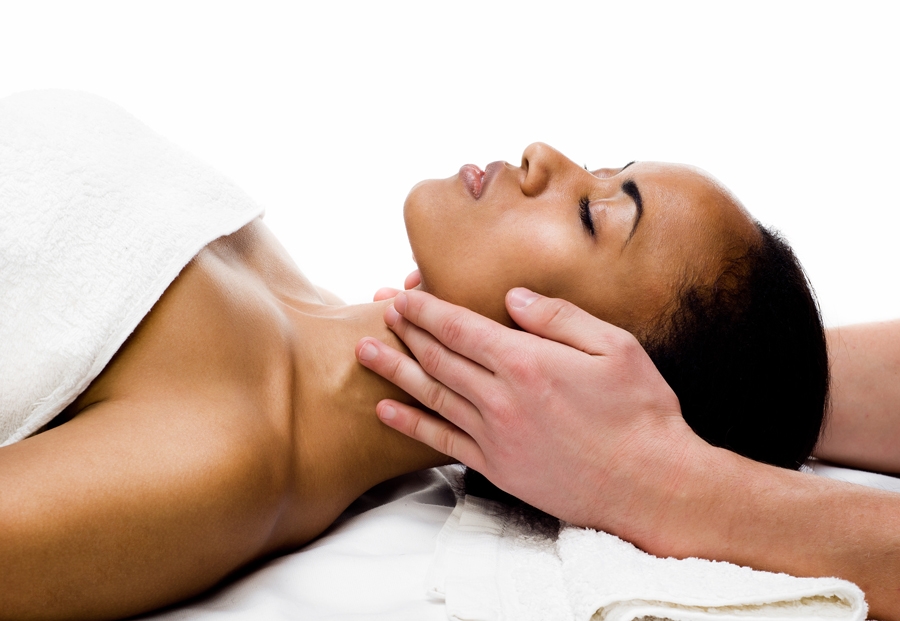Chemical peels are an effective treatment in the aesthetician’s toolbox due to their versatility. With the proper acid solution you can treat many skin conditions including acne, rosacea, and fine lines, as well as improve texture and pore size. You must keep in mind, however, that additional consideration and preparation is required when treating skin of color with a series of chemical peels. We will discuss the importance of a good protocol when treating skin of color in order to minimize the risk of post-inflammatory hyperpigmentation (PIH).
All skin of color has the potential for hyperpigmentation as a response to an injury to the skin and a chemical peel is essentially a controlled injury to the skin. The secret to treating darker skin tones is to use a conservative approach; this should include a solid consultation, a pre– treatment of the skin, a series of progressively stronger peels, and an effective at-home skin care routine.
CONSULTATION
The consultation will set the stage for establishing you as a skin care expert and building trust with your client. A review of the health history or intake form, a physical exam of the skin, and an interview are essential to the consultation. This will ensure greater compliance with homecare and lessen the risk of complications during the treatment series.
The health history or intake form should include your client’s demographic information, including their age and occupation. Is your client working outdoors with significant sun exposure? Does your client work in an office with high-energy visible (HEV) lighting? What is your client’s diet? Do they eat a lot of processed foods or dairy? A high percentage of people of Asian descent are lactose intolerant which can affect skin health. What is your client’s water intake? Is your client on birth control pills, bio-identical hormones, or hormone supplements that are influencing melanocyte production? What medications is your client taking and what allergies do they have? All these questions lead to vital pieces of information you’ll need to make the correct decisions about the kind of acid to use on their skin.
Chronic illnesses such as diabetes, cardiovascular disease, or autoimmune diseases are important in understanding the delayed healing that can result with a chemical peel. Clients should not have neuromodulators injected the same day as a peel. This can cause the neuromodulator to migrate.
INHIBITORS
Skin of color should be pretreated with a melanocyte inhibitor and a product with vitamin A in a homecare regimen for several weeks prior to the chemical peel series. Tyrosinase is an enzyme that inhibits melanosome proliferation, preventing them from traveling to keratinocytes. Vitamin A thins the stratum corneum and thicken the dermis, allowing for more even shedding of the top layers of the skin, resulting in brighter skin.
Skin lighteners may be used extensively in some ethnic cultures where “shadeism” is prevalent. In these cultures, individuals with lighter-colored skin have a higher social status compared to individuals with darker skin. Your client may be hesitant to share their use of skin lighteners, but you need to be aware, so you do not recommend including an additional lightener in their homecare routine.
Let’s review some of the most beneficial tyrosinase inhibitors to incorporate into a client’s pretreatment regimen. Some excellent melanin inhibiting ingredients include hydroquinone, arbutin (bearberry), tranexamic acid, kojic acid, niacinamide, vitamin C, and lactic acid. Most will provide better lightening action when in a cocktailed formulation than when in a single ingredient formulation.
INGREDIENTS
There is a great deal of controversy over the use of hydroquinone, long considered the gold standard for treating hyperpigmentation. With the exception of the United States, concentrations of 2% or more have been banned worldwide. It has also been shown to be carcinogenic in animal studies, as well as causing ochronosis, a permanent darkening of the skin, when used on large areas of the body for prolonged periods of time. However, there may be times when hydroquinone may be needed to jump start melanosome reduction. Do not recommend a client use hydroquinone for longer than three months at a time, alternating with a non-hydroquinone tyrosinase inhibitor.
Arbutin, from the bearberry plant, is a chemical cousin to hydroquinone and an excellent tyrosinase inhibitor without the irritating side effects associated with hydroquinone.
Tranexamic acid is used as an oral medication, as well as topical application. It’s a blood thickener and is used as a medication to stop vaginal bleeding for women with heavy menstrual periods. Its medical use led researchers to notice an improvement in women’s hyperpigmentation. Tranexamic acid should not be used long–term for skin lightening, as it can lead to blood clots and possible strokes.
Kojic acid has been around for hundreds of years and is derived from fungi. It is a safe and effective skin lightener; however, it is slow-acting and works better when combined with other melanocyte inhibitors.
Niacinamide, or vitamin B3, has been studied by the National Institute of Health for its ability to reverse sun damage. It increases blood flow and can slow down melanin production.
Vitamin C was the focus of a study conducted by Oregon State University in the early 2000s. It proved beneficial as an antioxidant with skin lightening effects. However, more is not always better. Vitamin C in percentages greater than 20 have been shown to be irritating but not needed to provide skin lightening benefits. Be cautious when recommending vitamin C if your client has a citrus allergy.
Lactic acid derived from sour milk is a multi-faceted ingredient. It is a tyrosinase inhibitor and a humectant, so it works well with dry skin.
In addition to a pretreatment recommendations for skin lighteners, you should include a vitamin-A-based product. Vitamin A in the form of retinol or retinyl palmitate (Retin-A) works to speed up cell turnover, thickening the dermis, and thinning the stratum corneum. Consider titrating up the dosage to reduce the inflammatory side effects of this ingredient.
INTRODUCING PEELS
Once a client’s skin has been preconditioned for two to four weeks, you can introduce an enzyme peel. The longer you precondition the client’s skin, the less likely a client will experience post-inflammatory hyperpigmentation. Pumpkin, pineapple, and papaya enzymes digest the protein bonds that hold the dead skin cells together. Enzyme peels cause microscopic shedding instead of the skin shedding in sheets as is the case with chemical peels.
If a client tolerates the enzyme peel well, the next step is the application of a low-percentage, high-pH chemical solution that is appropriate for the skin condition affecting the client. An alpha hydroxy acid blend with azelaic acid between 5% and 10% is a gentle option if the skin is properly conditioned. Remember that alpha hydroxy acid reduces the pH of the skin, causing a superficial shock to the skin cells, weakening the bonds between the cells of the stratum corneum, and resulting in a uniform shedding called desquamation. Alpha hydroxy acid peels must be neutralized to stop the penetrating action.
Mandelic, malic, or lactic acid are better options than a glycolic acid for skin of color, at least until your client’s skin is well-conditioned. You risk rebound hyperpigmentation if you use a peel percentage greater than 30%. Glycolic acid is the smallest molecule, so it will penetrate the deepest, as well as having the greatest risk for hyperpigmentation.
Salicylic acid is lipophilic and an excellent choice for oily, acneic skin. It works by dissolving the congestion in the follicle and providing antibacterial properties. Because it is related to aspirin, it should not be used on someone who is allergic to aspirin. Titrate the client up to 30% over a series.
PROTOCOL AND TREATMENT
Your chemical peel treatments should be done in a series. Increasing the strength and pH of home pretreatments will condition a person’s skin similarly to conditioning their body by going to the gym. Pictures are essential to demonstrate and validate the effectiveness of treatments treatments.
Treatments should be spaced three to six weeks apart based on a client’s skin analysis. A series of four to six peels should provide significant results. Younger skin will recover more quickly. You should not schedule another session until the client has completed the shedding process from the precious treatment. It is better to wait longer than to proceed too quickly.
Antioxidant serums and growth factors along with sun protection factor are important pieces of your client’s post-treatment skin care regimen.
Build confidence recommending chemical peels when treating skin of color by carefully considering a client’s health history and by conducting a thorough skin analysis. You will build your client’s ability to tolerate stronger chemical peel solutions with each visit and ultimately achieve their skin care goals.

A technician, educator, mentor, and business owner, Mary Nielsen has been at the forefront in medical aesthetics since its infancy in the early 1990s. She is currently vice chair and industry expert on the Oregon Board of Certified Advanced Estheticians. She is the author of “Fearless Beauties,” along with other aesthetic texts. She is the executive director of an aesthetic school, the founder of Fearless Beauties, and the creator of Cascade Aesthetic Alliance and Skintelligent Resources.
